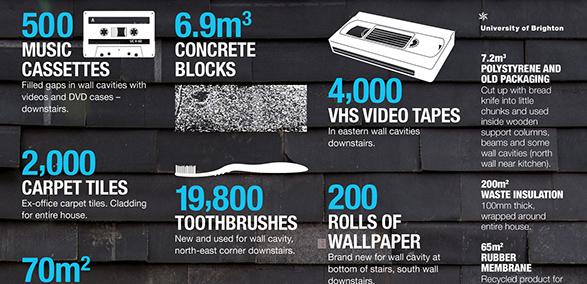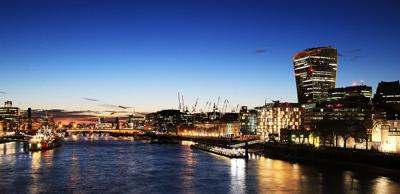The Brighton Waste House: The development of a 'living laboratory' for ecological architectural design
Now fully completed, the University of Brighton's Waste House is Europe's first permanent public building made almost entirely from material thrown away or not wanted with the creators having investigated strategies for constructing a contemporary, low energy building using over 85% ‘waste’ material drawn from household and construction sites.
It is also an EPC ‘A’ rated low energy building.
The goals of the project?
The Brighton Waste House project aims to prove that undervalued so-called waste material has the potential to become a valuable resource and therefore prove ‘"that there is no such thing as waste, just stuff in the wrong place!"
It also hopes to demonstrate that a contemporary, innovative, low energy building can be constructed almost entirely by young people studying construction trades, architecture and design.
To this end over 300 students worked on the project, which was initially fabricated in the workshops of City College Brighton and Hove, and then assembled and completed by students and apprentices.
The "waste" materials
Materials that have gone into the house include recycled bricks, ply sheets and off-cut timber from other construction projects, as well as “rubbish” including old plastic razors and denim jeans.
Also, DVDs and video cassettes have been slotted into wall cavities to help with insulation in the house. The building will be monitored by a PhD student from the Faculty of Science and Engineering to see how efficient the insulation qualities are.
Old toothbrushes are also being used in the wall cavities, including over 20,000 of them that have only been used once by business and first class passengers flying from Gatwicka and 10 tonnes of chalk waste and 10% of clay create a rammed chalk wall, with the help from a compressor and pneumatic rammer.
The density, thickness and thermal conductivity of rammed earth make it a particularly suitable material for storing passive solar energy as well as that given off by occupants of the building because warmth takes almost 12 hours to work its way through a 350mm thick wall.
The people behind the Waste House are engaging the community by working with City College Brighton and Hove and Mears Group, allowing students and apprentices a chance to work on a live construction project at the site at 58-67 Grand Parade, Brighton BN2 OJY.
Further information
Find out more about the project at The Brighton Waste House.
LABC offer a range of energy and sustainability services: Find out more.
Sign up to the building bulletin newsletter
Over 48,000 construction professionals have already signed up for the LABC Building Bulletin.
Join them and receive useful tips, practical technical information and industry news by email once every 6 weeks.
Subscribe to the Building Bulletin




Comments
Add new comment